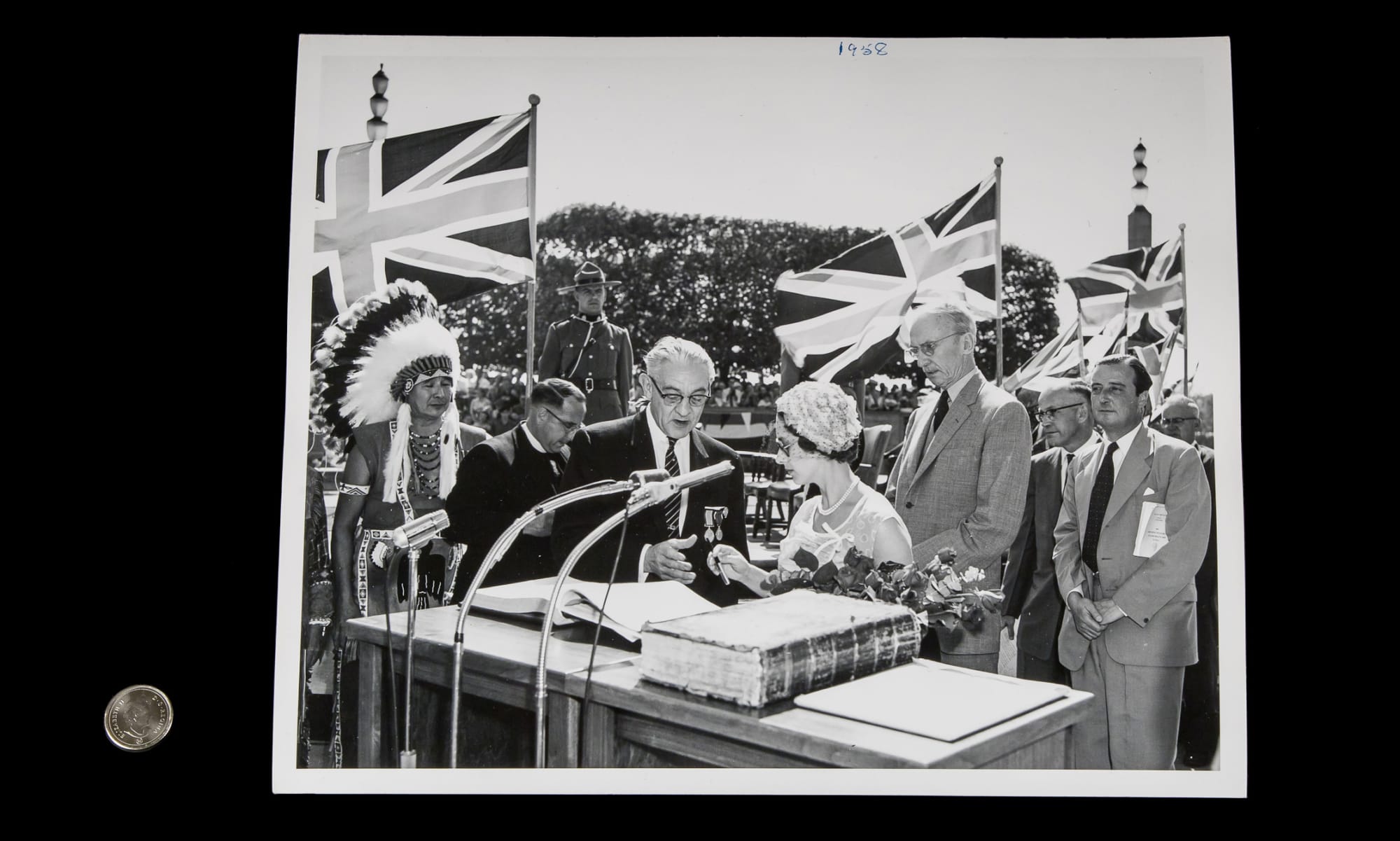
Photograph by Ron Roels
This photograph shows Princess Margaret signing a guest book when in Niagara Falls on August 8, 1951. She also signed the large Queen Anne Bible, also visible on the table, that was given to the Mohawks in 1714. Deconstructing historical images like this aids the public in better understanding Niagara's Indigenous legacy.
Colonization
The French soon realised the strategic importance of the Niagara River and convinced the Senecas in 1720 to let them build a "House of Peace," at the mouth of the Niagara River and the head of Lake Ontario. The building, which quickly grew into Fort Niagara, played a major role in the European contest for North America between the French and the British.
Colonization changed the look of the landscape and impacted Indigenous cultures as well. Manufactured goods began to replace the hand-made household goods of the past. Ceramic cooking vessels were replaced with metal kettles. Wood and stone tools were replaced by metals utensils and European-made weapons.
The local Indigenous peoples were often caught between the French and English, or later, between the Americans and the British. The river became both a geographic and political border between those opposing forces.
In the Treaty of Fort Niagara in 1764 the Senecas gave the British the rights to a swath of land, four miles wide on either side of the Niagara River, to be used for the King's purposes. By then the river had become an important corridor for travel and trade that the British wanted to secure. This region played an important part in the War of 1812. Laura Secord, famed for her adventure to warn British and allied forces of advancing American soldiers, made her way through the treacherous war zone, following ancient Indigenous trails. Reaching DeCew field in Thorold, Ontario, Haudenosaunee scouts greeted her and led her to Lieutenant James FitzGibbon and British officials to issue her warning.
There was also another earlier connection between the Haudenosaunee and the British that dates back to a 1667 Treaty of Peace and Friendship. Based upon that treaty, in 1710 four Indigenous leaders travelled to England to meet with Queen Anne to request her support for an invasion into French Canada. Instead, she offered an illustrated bible and a silver communion set, encouraging her political allies to become members of her Christian faith.
After the American Revolutionary War many Mohawks, led by Joseph Brant, served as allies to the Crown. They carried the bible and communion set to their new settlement along the Grand River. The Royal Chapel of the Mohawks was built in present-day Brantford. Succeeding generations of the Royal Family often would stop and visit the Chapel and sign the bible. This attests to the long-standing alliance between the Crown and the Haudenosaunee.